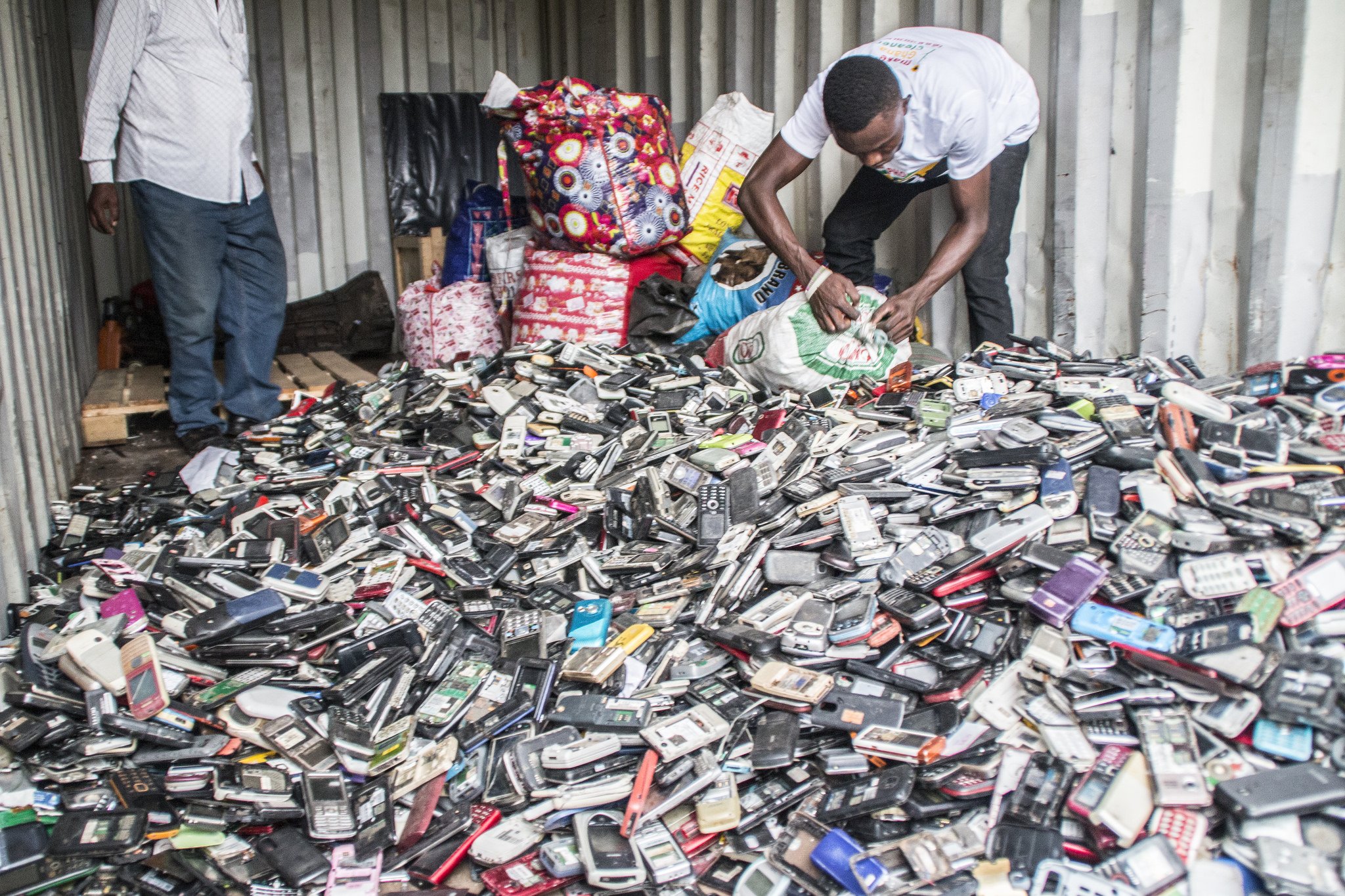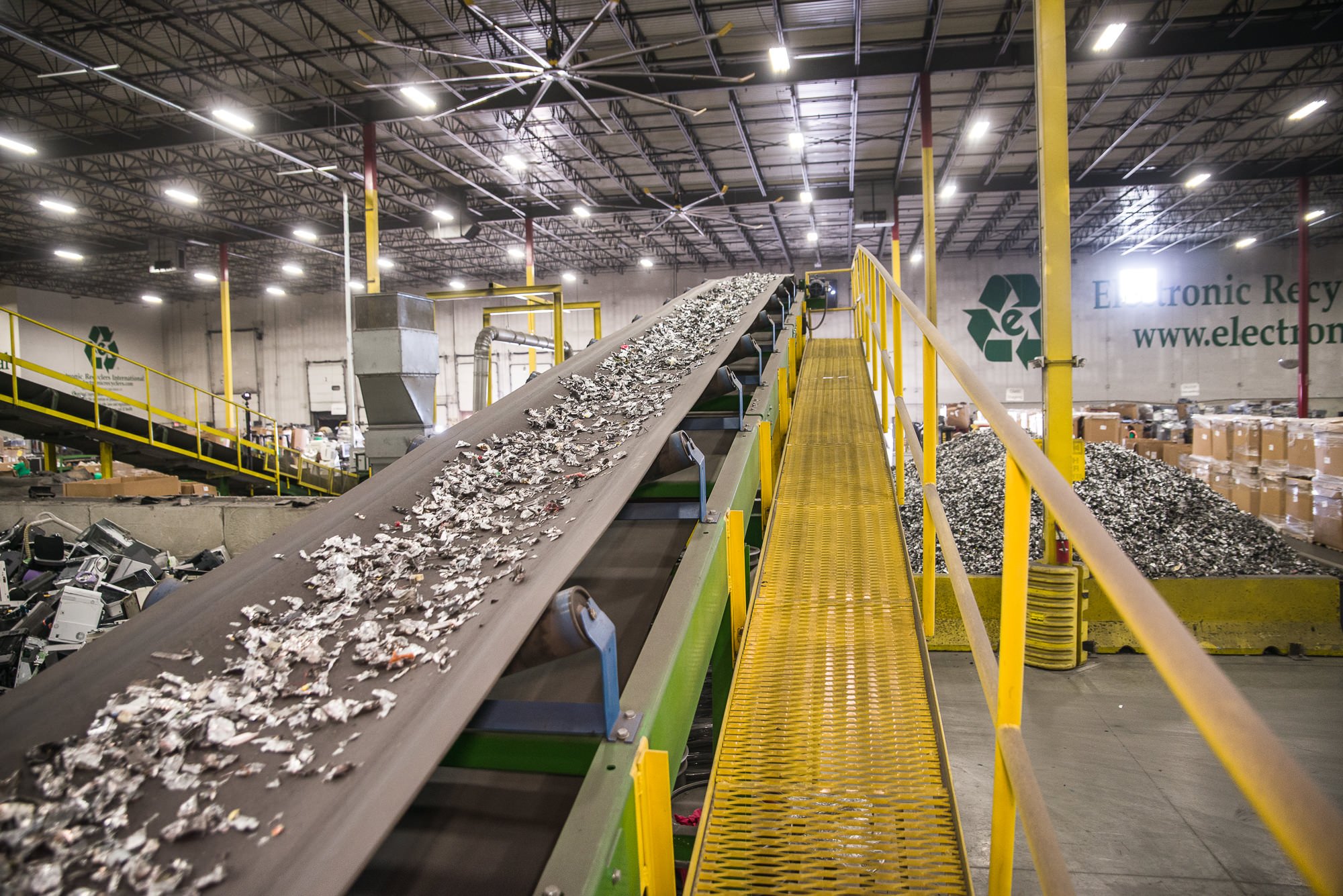A new email notification. An Instagram update. The taxi waiting outside. Throughout the day, there are hundreds of reasons — mostly trivial, sometimes crucial — for checking our mobile phones.
The devices often seem like extensions of our bodies, sitting in our pockets or handbags like outsourced memory banks or detached organs. But unlike a heart or liver, most people prefer to get rid of their current cellphone every 20 months or so, when a better model inevitably comes out.
And the phone that once seemed indispensable gets thrown away.
Take action: Call on Governments and Business Leaders to Say No to Single-Use Plastics
Globally, more than 5 billion people own cellphones, and many are constantly getting new ones.
Some people throw their old phones in the trash like any other piece of garbage, and they drift through the typical waste stream, ending up in landfills, decaying and leaching toxins into the environment, and causing a loss of $55 billion annually from squandered resources like gold. Other people let phones pile up in old drawers, creating shrines to obsoletion.
But those who try to be environmentally responsible and sustainable often seek out appropriate recycling centers, through which a phone may be refurbished and resold, or its innards may be given a second, rehabilitated life — without damaging the planet.
At least, that’s the ultimate goal. But what’s the real journey of a cellphone, from a removed SIM card to a fresh resource?
A World of E-Waste

First, some background.
E-waste, or electronic waste, is the fastest growing and most problematic waste stream in the world, according to The Verge. It encompasses computers, televisions, printers, cellphones — any electronic device.
In the US, more than 16 billion pounds of e-waste were discarded in 2014, or roughly 50 pounds per person. By the end of 2018, e-waste is expected to grow to 50 million tons annually.
Read More: The EU Gets 1 Step Closer to Banning Conflict Minerals From Supply Chains
The vast majority of e-waste isn’t disposed of in an environmentally friendly way. In fact, only around 15% to 20% of e-waste is recycled around the world and recycling methods vary substantially.
A lot of countries simply ship their e-waste to other countries, where toxic e-waste substances like lead, cadmium, and mercury cause environmental and health problems. In 2016, researchers at the Massachusetts Institute of Technology put tracking devices on 200 discarded devices in the US and followed them to Hong Kong, Mexico, Taiwan, China, Pakistan, Thailand, Dominican Republic, Canada, and Kenya, demonstrating the sprawling nature of e-waste management.

“One of the biggest challenges facing recyclers today is waste minimization,” Sean Magann, VP of Sales and Marketing for Sims Recycling Solutions, told Global Citizen over email. “Desktop computers were once made out of almost 100% metals and these metals were easy to recover, but now more items are plastic based and the average size of each device has decreased."
“From a commodity point of view, you have to do a lot more for metal recovery,” he added. “So, in general, we are receiving smaller pieces of equipment that have more hazardous volumes of material within them.”
Read More: Recycled Cell Phone Gold Will Be Used for 2020 Olympic Medals
Laws governing e-waste have been a long time coming, but countries are finally beginning to adopt them in the face of growing environmental and health concerns, according to Quartz.
When China, which took 70% of the world’s e-waste in 2016, banned the import of various devices at the start of this year, a mad-rush erupted among countries like the US to find alternatives. Thailand quickly became a “new dumping ground,” according to Reuters, and now authorities there are weighing whether or not to enact similar restrictions.
In the US, certain types of e-waste like TVs and computer monitors are considered hazardous and can’t enter the regular waste stream. Beyond that, state-by-state e-waste laws vary, with 25 states enforcing additional regulations and the rest failing to enact specific rules.
California is the pioneer in the field, having first created an e-waste rule in 2004 that taxes certain electronic devices like computer monitors, TVs, and laptops at the point-of-purchase to pay for future disposal by accredited recyclers.
But cellphones and various other electronic devices are currently not included in this law, even though they make up a large chunk of the 273,000 tons of e-waste that make it into California landfills each year.

“Electronics manufactured today have changed considerably over the past decade,” Magann said. “It was June 2007 when the first iPhone was introduced and since then we’ve seen an explosion of smaller format items, such as wearables in to the market.”
The proliferation of automation, sensor, and artificial intelligence technology have outpaced many recycling laws, according to a report calling for California’s e-waste law to be updated.
Read More: How to Properly Recycle Electronics Avoiding Environment, Human Rights Abuse
As a result, recyclers are often reluctant to take cellphones because the cost of stripping them generally surpasses how much the recovered resources can be resold for.
And with 1.7 billion models sold each year, a solution to this problem has become urgent, according to Recode.
Finding Gold in Waste

In the US, 416,000 cellphones enter landfills or incinerators every day, where they release toxins into the air, water, and soil.
The best outcome is for your old phone to be reused by someone else after its hard drive is erased. You can sell it on websites like eBay or Craigslist, donate it to second-hand stores, or find a licensed recycler that can take care of all the logistics for you.
Many electronics stores are also legally required to accept old cellphones and then to arrange for ways to recycle or dispose of them. For example, Apple recovered $40 million in gold in 2015 through this requirement by recycling iPhones.
Other places specialize in recycling to mitigate environmental harm.
Read More: The New iPhone Will Set You Back $1,000, But Its Real Cost Is Even Greater
The Lower East Side (LES) Ecology Center in New York, for example, has a second-hand store for old phones that it collects. Technicians clear a phone’s memory, fix broken parts, and then spruce it up before it gets sold.
Phones that are too old or faulty to be resold are gathered in pallets and sold to recyclers, which take the devices apart and sort valuable resources from rubbish.This both reduces the demand for new phones and prevents harmful substances from being released into the environment.
The recycling process, however, is often messy and occasionally poses a threat to workers. And more often than not, pallets of cell phones are shipped to other countries where recycling and disposal are sometimes lax.
For example, there are microentrepreneurs in Southeast Asia who smelt old processing boards from cellphones in the open air to get at tiny fragments of gold and other precious metals. In doing so, however, harmful chemicals are inhaled, often without the protection of safety masks, Recode reports.
Where regulations are more stringent, the recycling process is more carefully conducted.
E-waste recycling in the US often requires people to seek out legitimate facilities, like those that LES Ecology works with. In metropolitan areas, recyclers sometimes coordinate with building managers to collect e-waste in bulk, according to The Verge.
Read More: 7 Bad Habits That Are Also Bad for the Environment
In that case, garbage trucks gather large amounts of e-waste and ship them to facilities where they are demolished by human workers with sledgehammers, shredded on assembly lines, and sifted by machines that sort precious minerals from junk and then pound everything into dust.

Precious metals and plastic are then collected into bags and sold to smelting operations or disposed of in a way that limits environmental pollution.
Even in this scenario, it’s impossible to eliminate the environmental and health effects of e-waste.
That’s why environmental groups like Greenpeace are urging electronics manufacturers to stop using hazardous materials altogether. As awareness of e-waste increases around the world, some companies are pursuing sustainable alternatives.
In the meantime, however, that old maxim of sustainability — reduce, reuse, recycle — is still a good one to live by.
Global Citizen campaigns on responsible consumption and you can take action on this issue here.